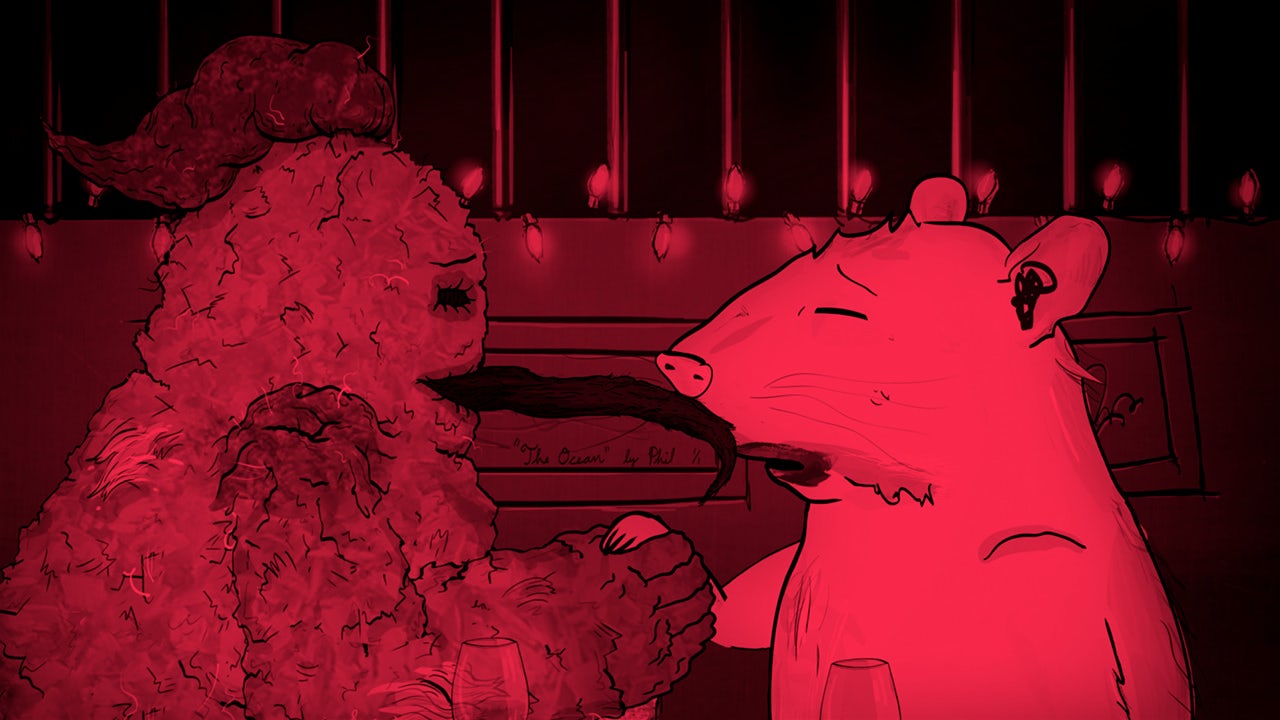The finale of the first season of Animals, the animated HBO series from former marketing agents Phil Matarese and Mike Luciano, follows a Turkey as he exacts revenge on New York City’s mayor for the murder of his wife, who was eaten by the mayor for Thanksgiving dinner. It’s an absurdist premise that takes itself seriously, much like the entire universe of Animals, which recently entered its second season. The show’s protagonists are the kind of critters that fade into the background of everyday urban life. Pigeons, squirrels, fleas, even dogs at a dog park, all living intricate lives unaware of the humans that ultimately control their fates. The show’s creators said they got the idea while staring idly out of their office window, imagining the lives of a set of pigeons perched on a windowsill.
It’s the sort of philosophical sun gazing that informs much of Animals’ plotlines. In the first season we learn how two pigeons would deal with one’s changing gender identity. And, through a story of love between a swan and a goose, the complications of inter-species dating. Animals takes the quandaries of the human world and supplants them onto the animal kingdom. Except, unlike humans, there’s a distinct moral clarity to the creatures on Animals. Perhaps because they lack the complications that human history brings, the animals on the show are remarkably zen. Take, for example, the second season premiere, which features a pair of rats who’d been captured for grueling lab experiments. The duo live serenely in their cage, blocking out queries of the outside world with the help of mysterious pellets that give them vivid hallucinations. The pair eventually bust out, after one of the rats goes cold turkey from the pellets. In the end, after a hallucinated betrayal, they go on as if nothing happened. For rats, life is literally too short to hold a grudge.
The same can’t be said for the humans on the show. A clever conceit of Animals is that, while the animal characters contain a multitude of linguistic variance (impressions done by the show’s creators, to be sure), the humans are all mute, their storylines advancing through pantomimed gestures and subtle cues. The lack of dialogue doesn’t remove the humans’ complexity, though. Ratcheting up from season one’s mayoral scandal that played out to a bloody end, this season’s humans appear to be faced with a pandemic that threatens their very existence. The human world is drawn in a remarkably dark way, even in contrast to the often macabre themes of the animal’s storylines. People's’ faces are gnarled and contorted so as to seem perpetually uncomfortable, as though the burden of being alive weighs down on them every second.
For rats, life is literally too short to hold a grudge.
The show’s creators were intentional in bringing this season into darker territory. Although most of the episodes were written before Trump’s ascent to the White House, creators Phil Matarese and Mike Luciano had apocalyptic visions for the series. “With this season we really had the idea of entropy in our minds. That everything will inevitably turn to chaos,” Matarese told Splitsider. In the season’s second episode, which aired on Sunday, a teenage pigeon kills his brother in a fit of jealousy only to learn that pigeons die all of the time. “We live in the wild. Things kill us all the time,” the pigeon’s uncle explains. In the face of calamity, the animals on the show hold no pretense about their place in the world. “Do not run from it,” the pigeon’s mother explains about death. “Entropy will win out in the end. Darkness will surround you.”
It’s a depressing view of the world, to be sure, but also a sort of invigorating one. The world around us continues to descend into its own form of chaos, with entire countries being leveled in age old wars over egos, as the environment continues its march toward manmade collapse. But Animals doesn’t intend to preach, or to even dwell on moments of darkness. Much like in the outside world, the nihilistic tendencies of the show lurk in the backdrop of the mundanity of everyday life. The fourth episode, which premieres next week, features a squirrel wedding as heartwarming as some of the softer episodes of the first season. In that way, Animals is a show firmly entrenched in the present mood, where calamity surrounds us but has done little to hamper our capacity for moments of joy.
There’s another way to see a parallel in Animals to our own moment in history. A recent string of strange wildlife occurrences, like a group of turkeys circling a dead cat, or a freakishly large chicken roaming around a farm, could easily serve as plot-points in the series. Like the animal kingdom present on the show, these real-life moments of organized chaos and unexplainable phenomena are a mirror; a reminder of the bizarre and the beautiful present in every animal, humans included.
